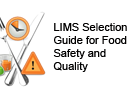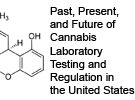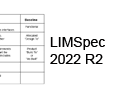2,6-Dichlorobenzonitrile
 | |
 | |
| Names | |
|---|---|
| Preferred IUPAC name
2,6-Dichlorobenzonitrile | |
| Other names
Dichlobanil, Dichlobenil
| |
| Identifiers | |
3D model (JSmol)
|
|
| ChEBI | |
| ChemSpider | |
| ECHA InfoCard | 100.013.443 |
| KEGG | |
PubChem CID
|
|
| UNII | |
CompTox Dashboard (EPA)
|
|
| |
| |
| Properties | |
| C7H3Cl2N | |
| Molar mass | 172.01 g/mol |
| Appearance | white crystalline powder |
| Density | 1.623 g/cm3 |
| Melting point | 144.5 °C (292.1 °F; 417.6 K) |
| Boiling point | 279 °C (534 °F; 552 K) |
| insoluble | |
| Hazards | |
| Flash point | 126 °C (259 °F; 399 K) |
Except where otherwise noted, data are given for materials in their standard state (at 25 °C [77 °F], 100 kPa).
| |
2,6-Dichlorobenzonitrile (DCBN or dichlobenil) is an organic compound with the chemical formula C6H3Cl2CN. It is a white solid soluble in organic solvents. It is widely used as a herbicide and organic chemistry building block.[1]
Mechanism of action
It has herbicidal properties killing young seedlings of both monocot and dicot species.[2] DCBN interferes with cellulose synthesis. DCBN adapted cell walls use minimal amounts of cellulose, instead relying on Ca2+-bridge pectates.[3]
Dichlobenil kills the roots of many species, but not all; further, the killing does not extend much beyond the portion actually soaked, according to the Californian department of agriculture in 1971.[4]
Application
In 1996, the University of California reported that "dosages were difficult to control... and as a result soaking or spraying methods are no longer used. ... The current application method involves applying metam-sodium products in foam carriers (similar to shaving cream)."[5]
Environmental behavior
It has low solubility, is not highly volatile and has potential to leach into groundwater. It is moderately persistent in soils and very persistent in water. It is moderately toxic to mammals, aquatic organisms, honeybees and earthworms.[6]
Dichlobenil residue in water almost completely dissipates in 5 to 6 months.[7]
The USDOE Bonneville Power Administration reported "high potential" for dichlobenil to enter groundwater.[8]
Regulatory status
It is no longer approved for use within the EU, as of 2009.[6]
The Inland Fisheries Ireland has reported "the registration of all dichlobenil products ... was revoked in Ireland from 18th March 2009, under Commission Decision 2008/754/EC of 18th September 2008. A period of grace for ... existing stocks expired on 18th March 2010."[7] The London underground found itself in violation by using dichlobenil in September 2011.[9]
Environmental toxicity
On an acute basis, dichlobenil is practically nontoxic to birds, mammals, honey bees; slightly to moderately toxic to aquatic invertebrates and estuarine organisms; and moderately toxic to fish. Dichlobenil is practically nontoxic to birds on a subacute dietary basis, but insufficient data are available to assess chronic avian toxicity. Dichlobenil is toxic to non-target terrestrial and aquatic plants. Dichlobenil may chronically affect fish at levels as low as 0.33 ppm and may chronically affect aquatic invertebrates at levels as low as 0.75 ppm. The dichlobenil degradate, BAM is slightly toxic to mammals and practically nontoxic to fish and aquatic invertebrates on an acute basis.[10]
Safety
Since 1995, the U.S. National Institutes of Health has warned about indoor usage: "Leave all windows open and fans operating... Put all pets outdoors, and take yourself any your family away from treated areas for at least the length of time prescribed on the label."[11]
The UN IPCS reports dichlobenil can be absorbed into the body by inhalation, through skin and by ingestion, and that dispersion can create harmful concentrations in air quickly; dichlobenil may affect skin, possbily causing chloracne.[12] Further, it warns dichlobenil is toxic to aquatic organisms, and does enter the environment under normal use, but great care should be taken to avoid release, e.g. through inappropriate disposal.[12] The IPCS advises particulate filter respirators as PPE adapted to the air concentration of dichlobenil; spilled substance should be swept into covered sealable containers, moistened if needed to prevent dusting, and disposed of according to local regulations.[12]
The U.S. Centers for Disease Control and Prevention (CDC) follows and cites the ICPS.[13]
Products
United States
These consumer products use dichlobenil as an active ingredient: "Oblitiroot",[14] "Root Reach",[15] "Foaming Root Killer"[16] and "RootX".[17] This is not an exhaustive list.
"Casoron" is dichlobenil sold agriculturally as a 50% wettable powder and as 4% granules.[18]
Synthesis
Dichlobenil is produced from 2,6-dichlorotoluene via the aldoxime.[1]
References
- ^ a b Franz Müller and Arnold P. Applebyki "Weed Control, 2. Individual Herbicides" in Ullmann's Encyclopedia of Industrial Chemistry 2010 doi:10.1002/14356007.o28_o01
- ^ Principles of weed science
- ^ Plant Responses to Environmental Stresses: From Phytohormones to Genome Reorganization: From Phytohormones to Genome Reorganization
- ^ "Control of Tree Roots in Sewers and Drains" (PDF). California Agriculture. 1971. p. 14. Retrieved 13 September 2015.
- ^ "Control of Tree Roots in Sewers and Drains" (PDF). University of California: Statewide Integrated Pest Management Project - Pesticide Education Program. 1996. p. 29. Retrieved 13 September 2015.
- ^ a b "dichlobenil (Ref: H 133)". University of Hertfordshire - Pesticide Properties DataBase. 2006. Retrieved 13 September 2015.
- ^ a b "Lagarosiphon Control in Lough Corrib" (PDF). Inland Fisheries Ireland. Archived from the original (PDF) on 25 February 2013. Retrieved 15 September 2015.
- ^ "Dichlobenil: Herbicide Fact Sheet" (PDF). U.S. Department of Energy - Bonneville Power Administration. pp. 2, 3. Archived from the original (PDF) on 25 February 2013. Retrieved 15 September 2015.
- ^ "'Toxic' pesticide Dichlobenil used on London Underground". BBC News. 2006. Retrieved 29 September 2011.
- ^ EPA (October 1998). "Dichlobenil" (PDF). epa.gov. US EPA. Retrieved 23 January 2023.
- ^ "Dichlobenil". NIH NLM ToxNet. Retrieved 15 September 2015.
- ^ a b c "dichlobenil (Ref: H 133)". University of Hertfordshire - Pesticide Properties DataBase. 2006. Retrieved 13 September 2015.
- ^ "Dichlobenil (Ref: H 133)". CDC - International Chemical Safety Cards (ICSC). 2006. Retrieved 13 September 2015.
- ^ "Oblitiroot". Olvidium. Archived from the original on 4 March 2016. Retrieved 13 September 2015.
- ^ "Root Reach". Heartland Labs. Retrieved 13 September 2015.
- ^ "Foaming Root Killer". Roebic. Retrieved 13 September 2015.
- ^ "RootX". RootX. Retrieved 13 September 2015.
- ^ Williams, H.h. (1974). "Effects of certain preemergence herbicides on Diochondra spp". Proceedings of the Second International Turfgrass Research Conference: 410–417. doi:10.2135/1974.proc2ndintlturfgrass.c60.
Notes
This article is a direct transclusion of the Wikipedia article and therefore may not meet the same editing standards as LIMSwiki.









